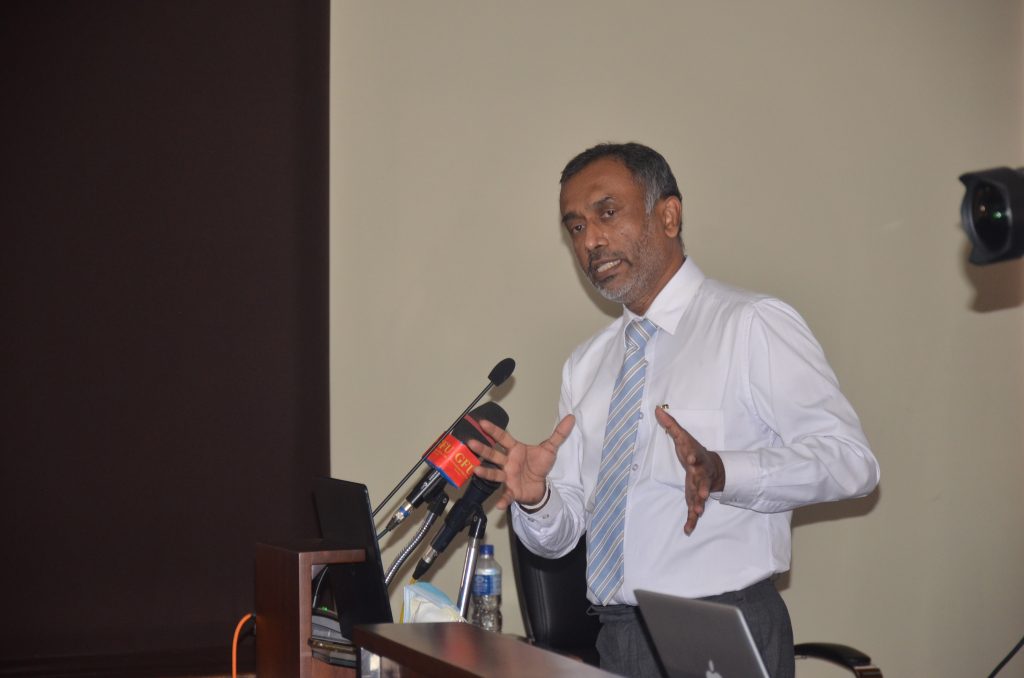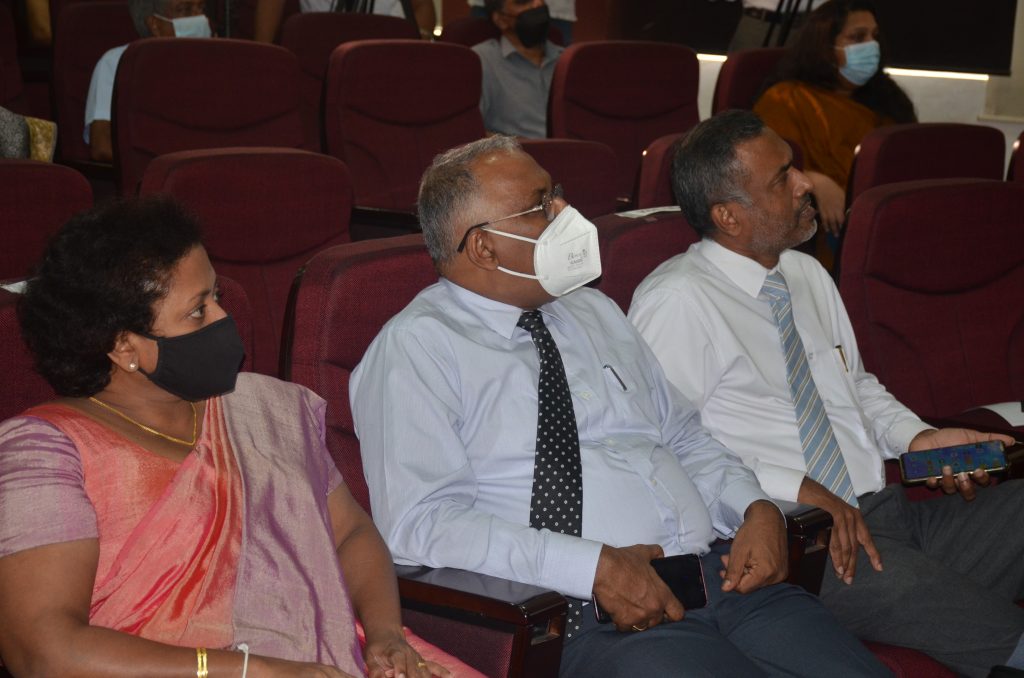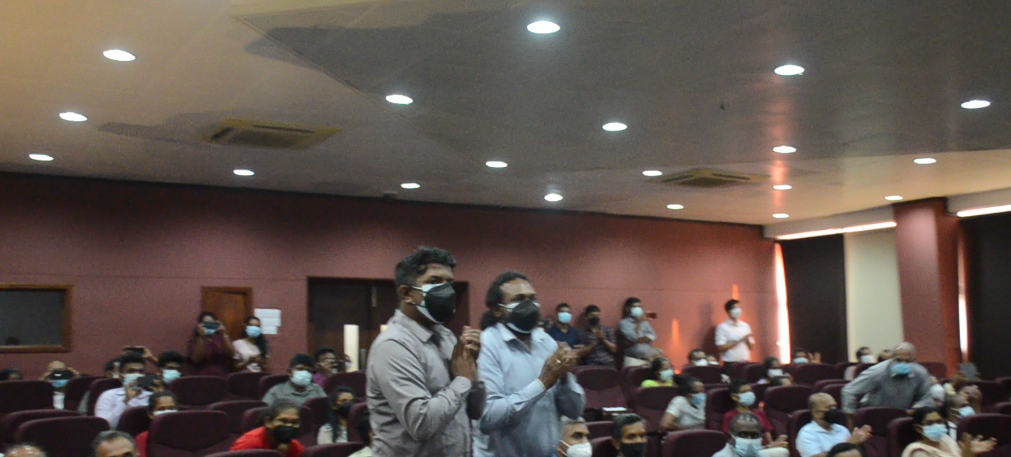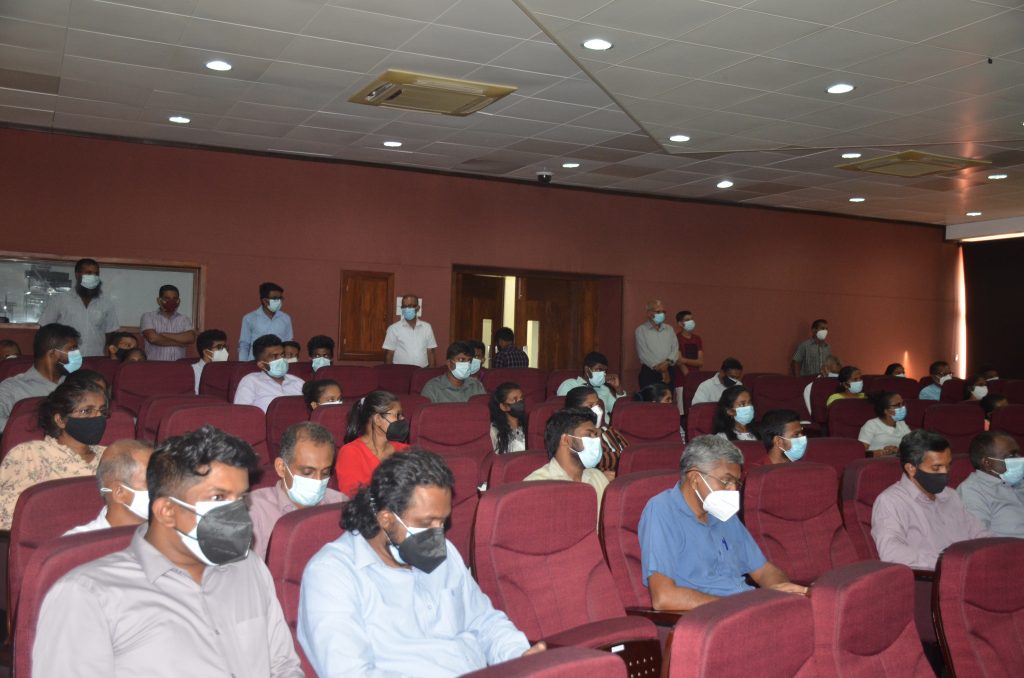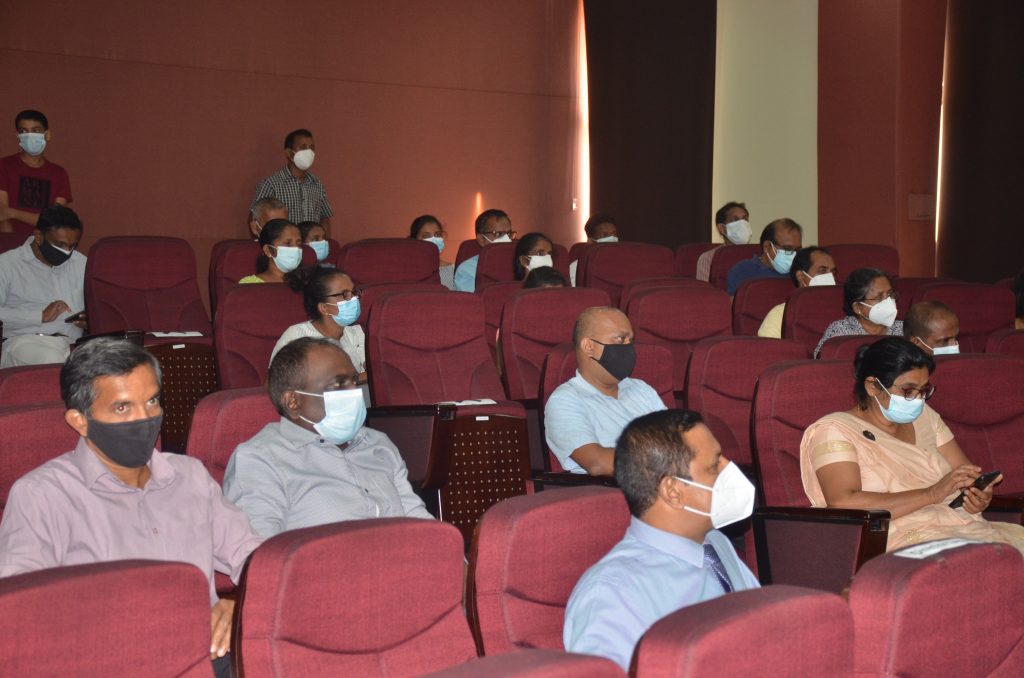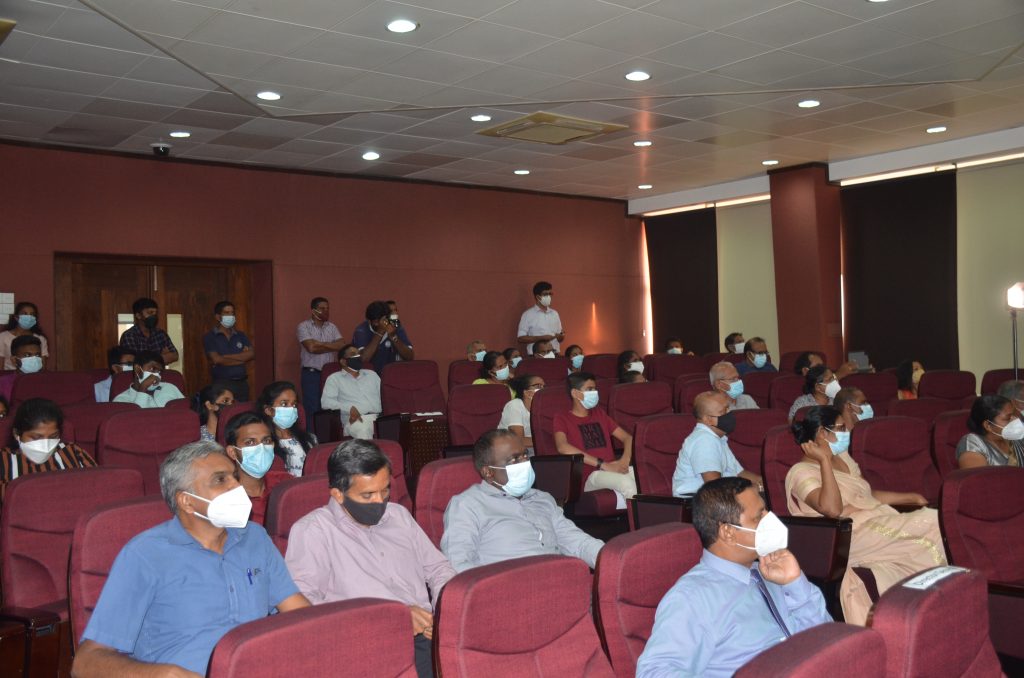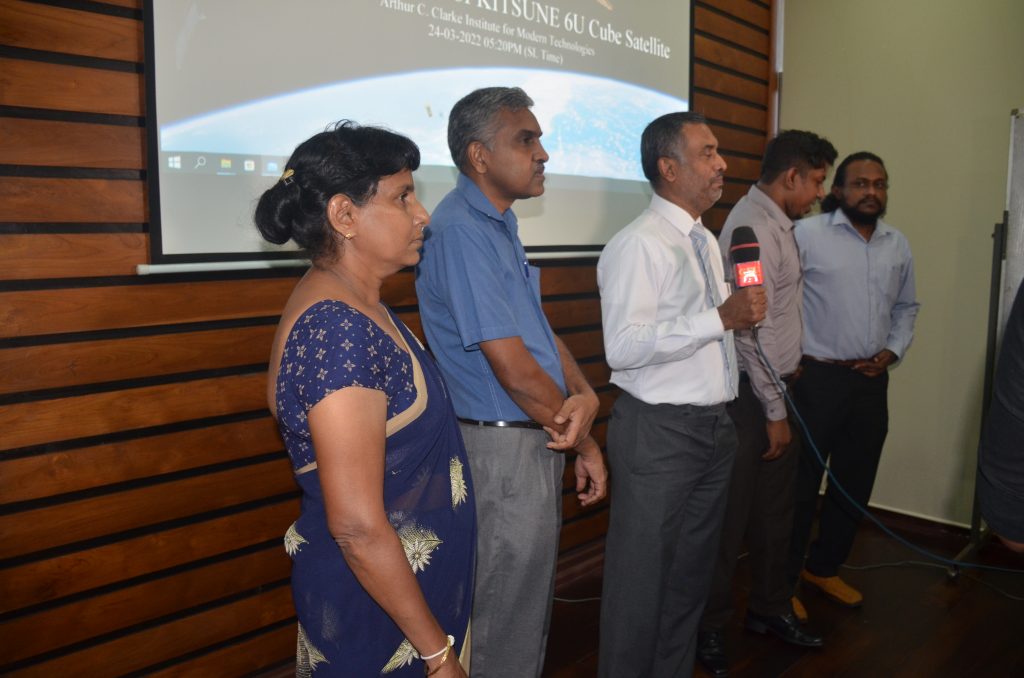Orbital Deployment of the Nanosatellite KITSUNE
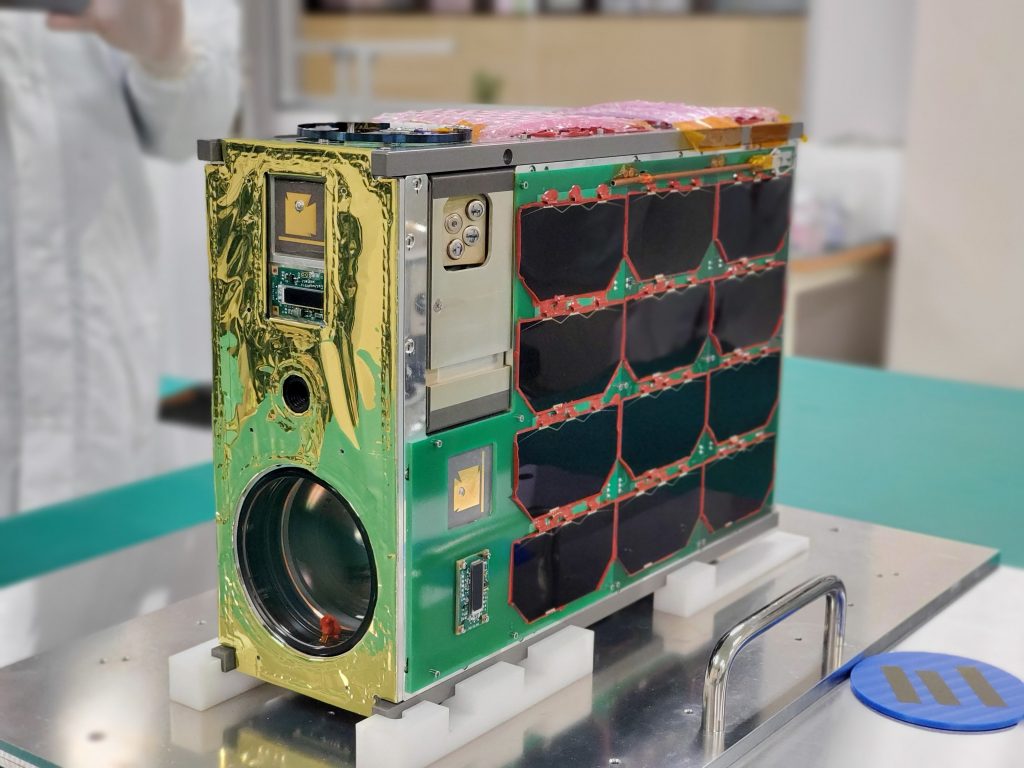
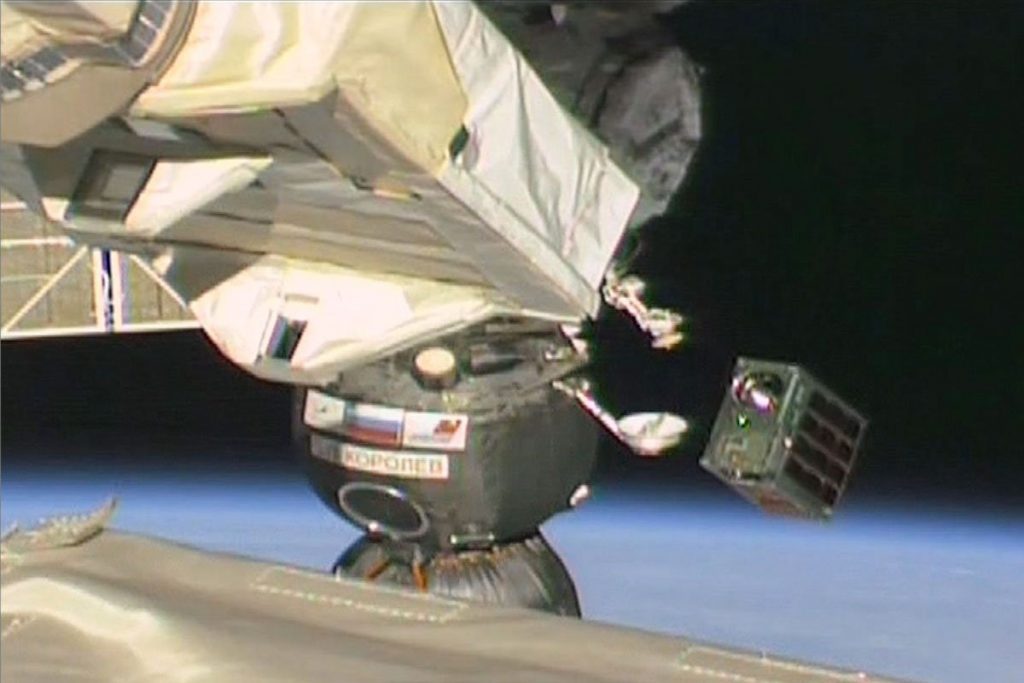
The KITSUNE Nano Satellite, designed and developed through a five-partite international collaborative project, with the Arthur C Clarke Institute for Modern Technologies (ACCIMT) as one partner, was successfully deployed into its orbit from the International Space Station (ISS) on the 24th of March 2022. The orbital deployment of the satellite took place at around at 17.41 Sri Lanka time. The ACCIMT organized a live video-viewing session of the event, where a live video feed on the deployment of the satellite from the ISS at an altitude of approximately 400km above the earth, which was channeled through the Japanese Aerospace Exploration Agency (JAXA), was displayed at the auditorium of ACCIMT. This was preceded by a brief presentation on the ACCIMT’s Nanosatellite development programme.
Space Technology has been recognized in the successive policy and strategy documents of the Science and Technology sector as a core backbone technology vital for enhancing the country’s overall national capabilities in advanced technologies, and as an important enabler-technology in the country’s growth in advanced-technology led knowledge-based economic activity. Development of nano-satellites is the main strategy that has been adopted by the ACCIMT in order to acquire and develop Sri Lanka’s national capacity in this domain of advanced technology.
Kitsune is the second nano-satellite development project that ACCIMT was involved in, having launched its first Nano-satellite Raavana-1, in collaboration with the Kyushu Institute of Technology (Kyutech), Japan, in June 2019. Kitsune was designed and developed by Kyutech (nodal partner) and four other partners, namely, Nanyang University, Singapore, Addnics Corporation, Japan, Harada Seiki Corporatin, Japan and the ACCIMT.
The satellite has a number of research and experimental missions: 5-meter resolution colour imaging of the earth, store and forward transmission of data received from Ground Sensor Terminals mainly for IoT applications, in-orbit testing of the communication module based on LoRa modulation technique, testing of a C-band communication transceiver, total electron content measurement of the Ionosphere, and testing of the Kyutech-standard 2U Satellite Bus system being the most significant ones.
It is significant that the ACCIMT became a partner of this project with no financial commitment, purely in exchange of the services of the ACCIMT’s Engineers in the design and development activities of the satellite. The project provided a highly valuable opportunity for further enhancing the competences of Sri Lankan Engineers in the design, development and testing of Nano-satellites, which could best happen in the form of such collaborative activities with technology partners from advanced space-faring nations. In addition, being a partner to this project enabled ACCIMT to have full access to the imagery, store-and-forward transmission, and other research and experimental services that would be provided by the satellite.
The ACCIMT’s project team involved in the project include Eng. Sanath Panawennage, the Director General & CEO, who led the Sri Lankan project team having initiated this collaborative opportunity, Eng. Ms Kamani Ediriweera DDG-TO, Eng. Kavindra Jayawardene Director (Communications Engineering Division), Eng. Tharindu Dayaratne, who made a major contribution in the communication and other subsystems and payloads, and Eng. Kaveendra Sampath. The live video streaming session was attended by an audience that included Ms. Deepa Liyanage, Secretary to the State Ministry of Skills Development Vocational Education Research and Innovation, Snr. Prof. Ranjith Premalal De Silva, Vice Chancellor UNIVOTEC, and Eng. Sanath Panawennage, Director General & CEO, ACCIMT.
ආතර් සී ක්ලාක් ආයතනයේ ඉංජිනේරුවරුන්ගේ
තාක්ෂණික දායකත්වයෙන් නිර්මිත දෙවන නැනෝ චන්ද්රිකාව කක්ෂ ගත කෙරේ
නවීන තාක්ෂණ පිළිබඳ ආතර් සී ක්ලාක් ආයතනය, ජපානයේ කියුෂු (Kyushu)තාක්ෂණ ආයතනය කලාපීය රටවල් සමග ඇති කර ගත් සම්බන්ධතා මත එම ආයතනය මගින් ක්රියාත්මක නැනෝ චන්ද්රිකා නිර්මාණ ව්යාපෘතියට ඇතුළත් වීමට ශ්රී ලංකාවට අවස්ථාව උදා වූ අතර එය චන්ද්රිකා තාක්ෂණය මෙතෙක් ලබා නොතිබූ ශ්රී ලංකාව වැනි රටවල්වලට පිරිනැමුණු සුවිශේෂී අවස්ථාවක් විය.
ඒ අනුව 2017 වසරේදී නවීන තාක්ෂණ පිළිබද ආතර් සී ක්ලාක් ආයතනය හා ජපානයේ කියුෂූ තාක්ෂණ ආයතනය අතර සහයෝගිතා ගිවිසුමකට එළඹුණු අතර එහි ප්රතිඵලයක් ලෙස ආතර් සී ක්ලාක් ආයතනයේ ඉංජිනේරුවන් විසින් නිර්මාණය කරන ලද ශ්රී ලංකාවේ පළමු නැනෝ චන්ද්රිකාව රාවණ-01, 2019 ජුනි 17 වන දින ජාත්යන්තර අභ්යවකාශ මධ්යස්ථානයේ සිට කක්ෂ ගත කරන ලදී.
මෙම නැනෝ චන්ද්රිකා ව්යාපෘතියෙහි තවත් පියවරක් ඉදිරියට තබමින් ආතර් සී ක්ලාක් ආයතනය ඇතුළු ජාත්යන්තර ආයතන 5 ක් ඒකාබද්ධව සැලසුම් කර නිර්මාණය කරන ලද කිට්සුනේ (kitsune )නමින් නම්කරන ලද දෙවන නැනෝ චන්ද්රිකාව 2022 පෙබරවාරි 18 දින සිග්නස් -17 (cygns-17)රොකට්ටුව මගින් ජාත්යන්තර අභ්යවකාශ මධ්යස්ථානය වෙත රැගෙන යන ලද අතර එම චන්ද්රිකාව ජාත්යන්තර අභ්යවකාශ මධ්යස්ථානයේ (ISS)සිට 400 km දුරින් පිහිටි කක්ෂය වෙත මුදා හැරීම ශ්රී ලංකා වේලාවෙන් 2022 මාර්තු 24 වන දින ප.ව 5.40 ට සාර්ථකව සිදු කෙරෙණි .
රාවණ -01 චන්ද්රිකාව මෙන් 6 ගුණයක විශාලත්වයකින් යුතු මෙම කිට්සුනේ චන්ද්රිකාව උසින් සෙ .මී 30 ක් ද, පළලින් සෙ .මී 20 ක් ද ,ඝනකමින් සෙ .මී 10 ක් ද වේ .ශ්රී ලංකාවේ ආතර් සී ක්ලාක් ආයතනය ඇතුළු සිංගප්පුරුව ජපානය යන රටවල ආයතන 5 ක සහයෝගිතාවයෙන් නිර්මාණය කළ මෙම කිට්සුනේ චන්ද්රිකාව සදහා ඉංජිනේරුමය තාක්ෂණික දායකත්වය ලබා දීම ආතර් සී ක්ලාක් ආයතනයේ ඉංජිනේරුවරුන්ගේ වීම විශේෂත්වයකි .
මෙම කිට්සුනේ නැනෝ චන්ද්රිකාව තාක්ෂණික අතින් උසස් චන්ද්රිකාවක් වන අතර එහි ඇතුළත් සංවේදී කැමරා පද්ධතිය මගින් පෘතුවියේ 5 cm ක පමණ වපසරිය තියුණු ලෙස නිරීක්ෂණයට ලක් කළ හැකි වේ. තවද පෘතුවිය වටා ඇති අයන ගෝලයෙහි ඉලෙක්ට්රොනික ඝනත්වය නිරීක්ෂණය කිරීම ඇතුළු විද්යාත්මක පර්යේක්ෂණ රැසකට ද දායක කර ගත හැකි අයුරින් නිර්මාණය කරන ලද මෙම නැනෝ චන්ද්රිකාව ආධාරයෙන් සිදු කෙරෙන පර්යේෂණ හා එමගින් ලබාගන්නා දත්ත ඉදිරි චන්ද්රිකා නිර්මාණයට මෙන්ම ශ්රී ලංකාව වැනි දියුණු වෙමින් පවතින රටවල විද්යාව හා තාක්ෂණයේ දියුණුව කඩිනම් කිරීමට හේතු වේ .
මෙම නැනෝ චන්ද්රිකා ව්යාපෘතිය සදහා ජාත්යන්තරය සමග සැලසුම් කිරීම අධ්යක්ෂ ජනරාල් ඉංජිනේරු සනත් පනාවැන්නගේ මහතා විසින් ද , අනෙකුත් තාක්ෂණිකමය දායකත්වයන් නියෝජ්ය අධ්යක්ෂ ජනරාල් ඉංජිනේරු කමනි එදිරිවීර මහත්මිය(තාක්ෂණික මෙහෙයුම් ) හා ඉංජිනේරු කවීන්ද්ර ජයවර්ධන මහත්මා (අධ්යක්ෂ සන්නිවේදන ඉංජිනේරු අංශය ) විසින් මෙම නැනෝ චන්ද්රිකාවෙහි සන්නිවේදන හා උප පද්ධතිවල නිමැයුම් කටයුතු ඉංජිනේරු තරිදු දයාරත්න විසින් ද ,ආතර් සී ක්ලාක් ආයතනයේ පෘතුවි ග්රාහක මධ්යස්ථානයෙහි මෙහෙයුම් කටයුතු ඉංජිනේරු කවීන්ද්ර සම්පත් විසින් ද සිදු කරන ලදී .
ශ්රී ලංකාවට ජාත්යන්තර වශයෙන් වැදගත් මෙම ඓතිහාසික අවස්ථාවෙහි නැරඹුම් සැසියක් නිපුණතා සංවර්ධන වෘත්තීය අධ්යාපන ,පර්යේෂණ හා නව නිපැයුම් අමාත්යංශයේ ලේකම් දීපා ලියනගේ මහත්මියගේ ප්රධානත්වයෙන් ආතර් සී ක්ලාක් ආයතනයේ ශ්රවනාගාරයේ දී පැවැත්වූ අතර මෙම අවස්ථාවට ආතර් සී ක්ලාක් ආයතනයේ අධ්යක්ෂ ජනරාල් සනත් පනාවැන්නගේ ,ජේෂ්ඨ මහාචාර්ය රංජිත් ප්රේමලාල් ඇතුළු විද්වතුන් රැසක් ද සහභාගී වූහ.
https://www.youtube.com/watch?v=JSD5UJ2Gvlk
(YouTube Live stream Link)


